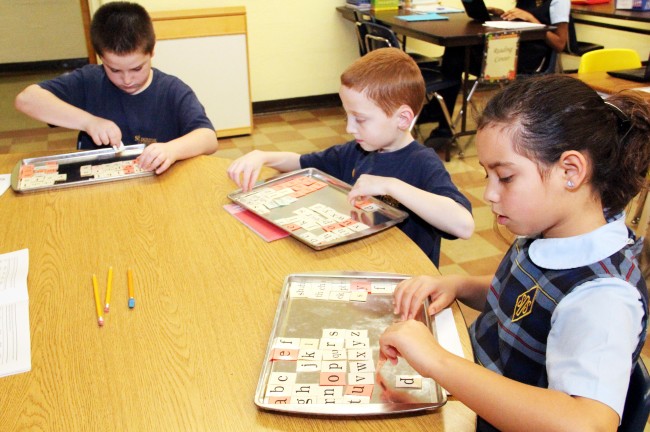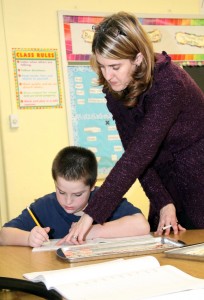Oftentimes when Catholic students need an individualized education plan (IEP) they end up attending a public school because of the support services provided there.
Access to those services in a Catholic school setting is a win-win for parents who want their children to go to a Catholic school and receive the educational support they need. For several years, the archdiocesan Office of Catholic Education funded a learning support program that was offered at designated elementary schools across the Archdiocese. Last year, the office was no longer able to fund this program.
[hotblock]
St.DominicSchoolinNortheast Philadelphiaserved as one of the designated schools for the learning support program. The principal of the school, Immaculate Heart of Mary Sister Shaun Thomas Callahan, felt it was important to maintain the program, especially since parents valued it and wanted it to continue.
In addition, Sister Shaun noted there are increasing numbers of children “whose needs are more distinguished.”
“We want to assist any family who chooses Catholic education so that we can provide that type of education – religious, academic, social,” said Sister Shaun, who has been principal of the school for six years.
With the support of St. Dominic’s pastor, Father Edward Kearns, and the parish advisory council, Sister Shaun achieved her goal of continuing to offer this program, which also attracts students from nearby parishes.
She said there are approximately 20 learning support students enrolled at the school.
Renee Barclay, learning support teacher at St. Dominic’s, said the students she works with are at least two grade levels behind in language arts or math.
“We have a pull-out model where the students come to the learning support room for English language arts or math,” Barclay said. “They’re mainstreamed with their regular education classes for science, social studies, religion, etc. When it’s time for English language arts or math, they’ll come to the learning support room, which is a small group setting.”
She noted that many students only come to her for instruction in math or language arts. “The instruction is individually based, depending on what each child needs,” Barclay said.
Some of those needs include modifications in the curriculum, and Barclay works with other teachers to provide accommodations and modifications for students in the program. One example of an accommodation is allowing students to take tests in a small group setting where Barclay can read questions aloud or clarify directions.
The learning support students at St. Dominic’s have IEPs with goals they can achieve during the academic year. Barclay said IEP goals are reviewed annually so that new goals can be created and the student’s academic progress can be tracked.
“Our goal would be to get as many of the children on grade level as we can to help them mainstream back into the regular education class,” she added. “There are students who do well in learning support and then are mainstreamed back into their classroom.”
One of the main benefits of the program is that the students can learn at their own pace through individualized instruction.
“Some students need a more hands-on approach or they need material presented in different ways,” Barclay said. “Being in a program like this helps them to feel successful and increases their self-esteem. It alleviates the pressure for both the student and the parent because their child is enjoying coming to school where they’re being successful and they’re learning in the way they need to learn.”
Sister Shaun witnesses that success every school year. “These students end up being at the top of their class because their confidence is really buttressed by being in this special class,” she said. “I’ve seen children grow in the curriculum area, but I’ve also seen them grow just as strongly in their self-confidence and their ability to perceive themselves as worthwhile students.”
The principal emphasizes that the program has been able to meet the needs of the individual learners and convince them that they’re learners.
“All children can learn,” Sister Shaun said. “It’s just that we learn in different ways. That’s the mantra we’ve used here.”
She added that without the program these students would have to leave the school. “I don’t know what we would do without it,” Sister Shaun said.
PREVIOUS: St. Hubert’s, Lansdale Catholic students learn art history in distance learning approach
NEXT: Archbishop Ryan students ready to ‘break a leg’ in new Black Box Theater






Share this story